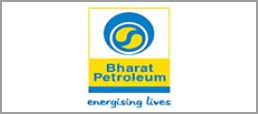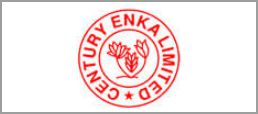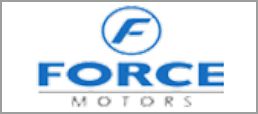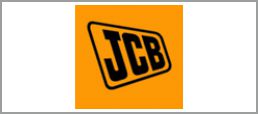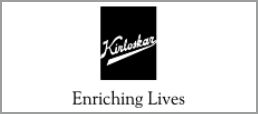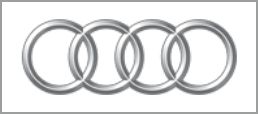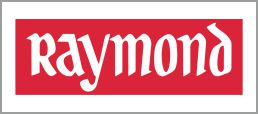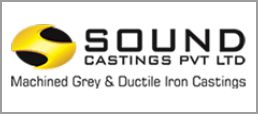
Unveiling the Power of Steel Ventilators - A Guide to Passive Ventilation and the Superiority of Ridge Vents
- Geometric Steels
- May 31, 2024
In the world of construction and architecture, ventilation plays a crucial role in ensuring comfort, health, and structural integrity. Among the myriad options available, steel ventilators stand out as a sturdy, reliable choice for passive ventilation systems. In this comprehensive guide, we delve into the realm of steel ventilators, exploring their types and functionalities, while shedding light on the superiority of ridge vents over other ventilation systems.
Index
1. Understanding Steel Ventilators
2. The Power of Passive Ventilation
3. Ridge Vents: The Pinnacle of Passive Ventilation
4. Choosing the Right Steel for Ridge Vents in Industrial Factory Buildings
Understanding Steel Ventilators
Steel ventilators are ventilation systems designed to facilitate the exchange of air within a structure without the use of mechanical components such as fans or blowers. These ventilators rely on natural forces such as wind and buoyancy to create airflow, making them highly energy-efficient and environmentally friendly.
Types of Steel Ventilators

1. Louvre Ventilators
Louvre ventilators feature slatted openings that allow air to flow in and out while preventing the entry of rain, debris, and insects. They are commonly installed on walls or roofs and are available in various designs to suit different architectural styles.
2. Ridge Ventilators
Ridge ventilators are installed along the peak of a roof, providing continuous ventilation along the entire length of the ridge. They work in tandem with soffit vents or other openings to create a natural convection current that draws warm air out of the building while allowing fresh air to enter.
3. Turbo Ventilators
Turbo ventilators harness wind energy to create airflow within a structure. They feature a turbine-like design that spins when exposed to wind, creating suction that draws hot air out of the building. Turbo ventilators are particularly effective in areas with high wind speeds.
4. Static Ventilators
Static ventilators, also known as roof vents or mushroom vents, are non-moving components that provide passive ventilation. They are typically installed on the roof and are available in various shapes and sizes, including square, round, and rectangular.
The Power of Passive Ventilation

Passive ventilation, as facilitated by steel ventilators, offers several advantages over mechanical ventilation systems:
• Energy Efficiency: Passive ventilation systems consume no energy as they rely solely on natural forces to create airflow. This results in significant cost savings on utility bills and reduces the carbon footprint of the building.
• ReliabilitySteel ventilators have minimal moving parts, reducing the likelihood of mechanical failure and the need for regular maintenance. They continue to provide ventilation even in the event of power outages, ensuring uninterrupted airflow.
• Quiet Operation: Unlike mechanical ventilation systems that can produce noise, steel ventilators operate silently, contributing to a peaceful indoor environment.
• Improved Indoor Air Quality: Passive ventilation systems promote the circulation of fresh air, reducing the buildup of indoor pollutants such as volatile organic compounds (VOCs), odours, and moisture. This helps maintain a healthy and comfortable indoor environment for occupants.
Ridge Vents: The Pinnacle of Passive Ventilation

Among the various types of steel ventilators, ridge vents stand out as a superior choice for several reasons:
1. Continuous Ventilation: Unlike individual static vents that are spaced apart, ridge vents provide continuous ventilation along the entire length of the roof ridge. With the help of Louvers as the intake vents, this ensures uniform airflow distribution and prevents hot spots and moisture buildup.
2. Minimal Air Resistance: Ridge vents are strategically positioned at the highest point of the roof, allowing warm air to naturally rise and exit the building without encountering significant resistance. This natural buoyancy effect maximizes airflow efficiency.
3. Aesthetic Appeal: Ridge vents are discreetly integrated into the roofline, creating a sleek and unobtrusive appearance. Unlike protruding roof vents or mechanical exhaust fans, ridge vents blend seamlessly with the architectural design of the building.
4. Weather Resistance: High-quality ridge vents are constructed from durable materials such as galvanized steel or aluminium, ensuring long-term performance and weather resistance. They are designed to withstand extreme temperatures, wind-driven rain, and snow accumulation without compromising functionality.
Choosing the Right Steel for Ridge Vents in Industrial Factory Buildings
When selecting the appropriate type of steel for ridge vents in a factory building, it's important to carefully consider the environmental conditions and specific requirements of the factory. Here's a detailed breakdown of the three commonly used types of steel for ridge vents and the factors that influence their choice:
1. Colour Coated Steel
Description: Colour-coated galvanized steel is coated with a layer of zinc to protect against rust and corrosion.
Advantages:
• Good Corrosion Resistance: The zinc coating provides effective protection against rust and corrosion, making it suitable for moderate environments.
• Cost-Effective: It is generally more affordable than stainless steel and aluminized steel.
• Widely Available: It is readily available and easy to work with, making it a popular choice for many industrial applications.
Common Uses: Suitable for environments where moderate protection against moisture and chemicals is needed. It is commonly used in general industrial settings where the exposure to corrosive elements is not severe.
2. Stainless Steel
Description: Stainless steel contains chromium, which significantly enhances its resistance to corrosion.
Grades:
• 304 Stainless Steel: Offers excellent corrosion resistance and is suitable for most industrial environments.
• 316 Stainless Steel: Contains molybdenum, providing enhanced resistance to chlorides and aggressive industrial chemicals.
Advantages:
• Superior Corrosion Resistance: Both 304 and 316 grades provide excellent protection against rust and corrosion, with 316 offering higher resistance in harsh environments.
• High Durability and Strength: Stainless steel is strong and durable, capable of withstanding harsh conditions.
• Low Maintenance and Aesthetic Appeal: It requires minimal maintenance and has a clean, attractive appearance.
Common Uses: Ideal for environments with high humidity, exposure to chemicals, or stringent cleanliness standards, such as food processing or pharmaceutical factories.
3. Aluminized Steel (Galvalume)
Description: Steel coated with an aluminium-silicon zinc alloy known as Galvalume.
Advantages:
• Excellent Heat Resistance: It can withstand high temperatures, making it suitable for high-temperature environments.
• Good Corrosion Resistance: The aluminium-silicon zinc alloy coating provides good protection against rust and corrosion.
• Reflective Properties: Its reflective properties can help in controlling the temperature inside the factory.
Common Uses: Suitable for high-temperature environments or where there is a need for reflective surfaces to manage heat.
Factors Influencing the Choice of Steel for Ridge Vents
1. Corrosion Resistance: The steel must withstand the specific environmental conditions of the factory, such as humidity, chemicals, and other corrosive elements.
2. Strength and Durability: Ridge vents must be able to withstand external environmental factors, including wind and potential impact.
3. Maintenance Requirements: Materials that require less maintenance are preferred for long-term cost-effectiveness and reliability.
4. Budget: Balancing performance with budget constraints is necessary. While stainless steel provides the best overall performance, it is also more expensive.
Recommendations
• General Industrial Use: Colour-coated galvanized steel is often sufficient for ridge vents in standard industrial environments where there are moderate exposure levels to corrosive elements.
• Harsh Environments: For factories with high levels of humidity, corrosive chemicals, or stringent hygiene requirements, stainless steel (especially 304/316 grade) is recommended due to its superior corrosion resistance and durability.
• High-Temperature Environments: Aluminized steel (Galvalume) is beneficial where high temperatures are a concern due to its heat resistance properties.
While colour-coated galvanized steel is commonly used for its balance of cost and performance, stainless steel (particularly 304/316 grade) is the preferred choice for more demanding industrial environments. The specific conditions of the factory environment should guide the final decision on the type of steel used for ridge vents. By carefully considering factors such as corrosion resistance, strength, maintenance, and budget, you can select the most suitable steel type for ensuring efficient and durable ventilation in your factory building.
Steel ventilators offer a reliable and energy-efficient solution for passive ventilation in residential, commercial, and industrial buildings. Among the various types of steel ventilators, ridge vents stand out as the pinnacle of passive ventilation, offering continuous airflow, minimal air resistance, aesthetic appeal, and weather resistance.
One notable example of innovative ridge vents is the Airflow Ridgevent by Geometric Steels, available in configurations such as the Hat Top, Monitor Type, Onion Type, and Apex Airflow Ridgevent. Each configuration is tailored to specific architectural requirements and climate conditions, providing architects, contractors, and building owners with versatile solutions for optimizing airflow efficiency and enhancing indoor air quality. Geometric Steels sets a new standard for passive ventilation excellence, empowering users to invest in the future of building ventilation with confidence.
Disclaimer: The information provided on this blog is for general informational purposes only; the owner makes no representations as to accuracy or completeness, and will not be liable for any errors, omissions, losses, injuries, or damages arising from its use. Opinions expressed are those of the authors and do not necessarily reflect the views of any affiliated organization.






